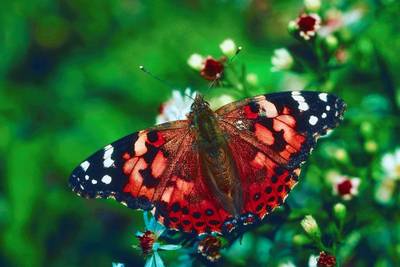Make your yard butterfly-friendly to bring color and movement to the landscape while aiding the pollination of flowers, fruit, and vegetable plants.
Unfortunately, urbanization and other development are shrinking butterflies’ natural habitat, leaving fewer places to feed, mate, and lay eggs. Here are some tips to reverse that trend.
- Butterfly gardens don’t have to be large. You can grow plants in containers on a patio or even in hanging pots and window boxes.
- Butterflies need the sun to maintain body temperature, so place your garden in the sunniest location possible.
- The key to attracting butterflies is to provide them with lots of nectar sources; they also prefer to feed on open, tube-shape flowers. See our article on Plants that Attract Butterflies.
- All butterflies start out as caterpillars that require host plants on which to feed. Many of these are native plants—weeds and wildflowers that may already be growing on or near your property. Some good choices include clovers, milkweeds, and violets.
- After a rain, you may see butterflies congregating around a puddle or damp area in the garden to drink and extract minerals from the soil. Maintaining a puddle in the same spot will keep butterflies coming back.
Butterfly gardening has become big business. Butterfly farms offer live butterflies to release at special occasions, especially weddings.





